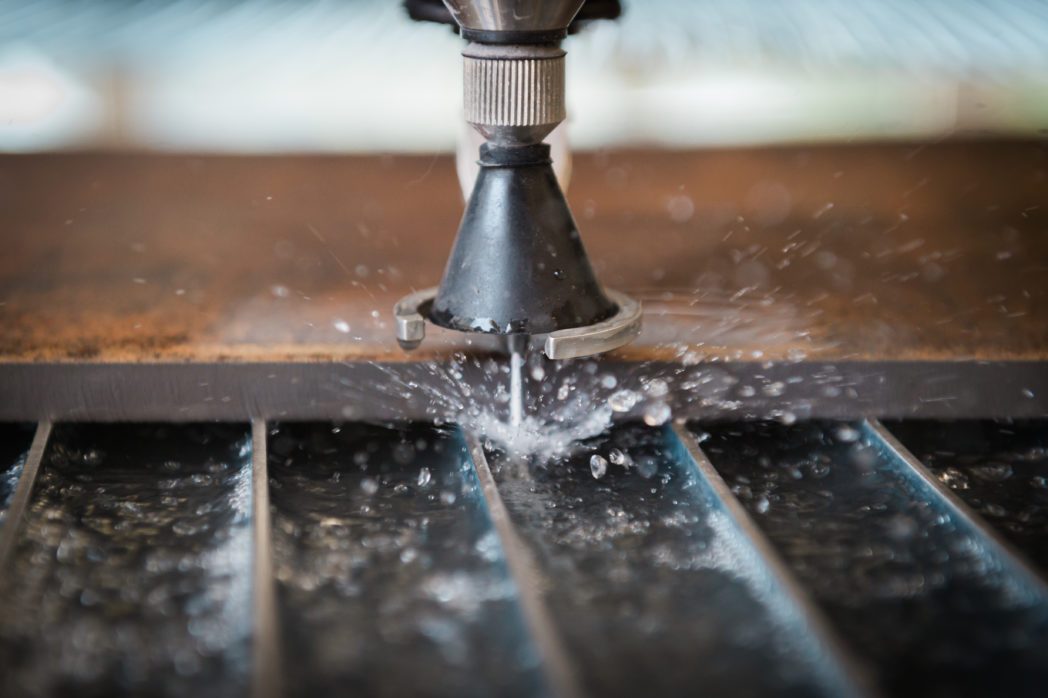
Water can do much more than quench thirst or clean. Water can also cut. With the right pressure and method, the cool liquid can cut a variety of materials with tremendous force. For 25 years, the company STM waterjet GmbH, based in Eben im Pongau, has been successfully developing waterjet cutting systems. The company’s customers, located worldwide, primarily come from the steel, aluminum, metal, plastic, stone, and glass industries. “Glass, plastic, stone, or various specialty metals – we cut through the material,” says CEO Jürgen Moser. “And we do it with an accuracy of up to 0.01 millimeters.” This precision is achieved through the cold cutting process, which prevents the material from burning.
User-friendly operation
To ensure easy operation, the Eben-based company has developed its own software that can be installed and used on any standard PC. No specific prior knowledge is required, allowing customers to start cutting immediately. Additionally, StM’s experts provide application consulting in terms of Industry 4.0 “to enable companies to enter into intelligent, fully automated production,” says Moser.
IIoT – Industrial Internet of Things
The Internet of Things (IoT) connects everyday physical objects with virtual technologies. Examples of IoT can be found in our daily lives, such as smartwatches that are worn on the wrist and measure various aspects of users’ movements during sports through GPS tracking and other software programs. For example, coffee machines can be set to prepare coffee every morning at a specific time using a smartphone app, eliminating the need for pressing a button.
In the context of the Industrial Internet of Things (IIoT), the same principles apply, but in an industrial context. STM aims to support small and medium-sized enterprises (SMEs) in their entry into IIoT and relies on a machine-to-machine (M2M) approach and individual consultation.
STM waterjet’s cutting systems have been M2M-enabled for many years, allowing for data exchange through various interfaces. STM is happy to share this expertise with its customers. “Our application engineers have developed profound expertise over the past decade and know how production data can be exchanged and utilized in a more or less open network. They assist operating companies of STM waterjet cutting systems in determining how and which data can be intelligently processed using STM equipment,” says Moser.
In doing so, the company in Eben also makes a valuable contribution to the ongoing digitalization of Salzburg’s economy, particularly in terms of the international competitiveness of the region.
This might also interest you
6. March 2025
salz21: Necessary Steps for the Future
On March 5, 2025, salz21 | Home of Innovation once again provided a platform for future topics, innovations, and interdisciplinary exchange. More than 1,000 visitors took the opportunity to learn about current developments and discuss perspectives for tomorrow. Three topics were particularly dominant: climate protection, artificial intelligence, and a strong Europe.
25. September 2024
Green Deal: How Sustainable Business Development Can Look
The EU aims to create political and legal frameworks through the Green Deal to transform both the economy and society in a sustainable way. The Pinzgau-based company Design Composite demonstrates how this can be implemented.
15. August 2024
Sunbeam Yachts: Where Craftsmanship Meets Digitalization
Sunbeam Yachts has been building exclusive sailing yachts at Mattsee for generations. The production is done by hand, with some processes now digitally supported.
12. August 2024
SBS: One Software for Many Self-Service Devices
As a leading provider of banking software in Salzburg, SBS is now exploring new markets. The company remains true to its core segment by offering manufacturer-neutral software for self-service devices in additional sectors.